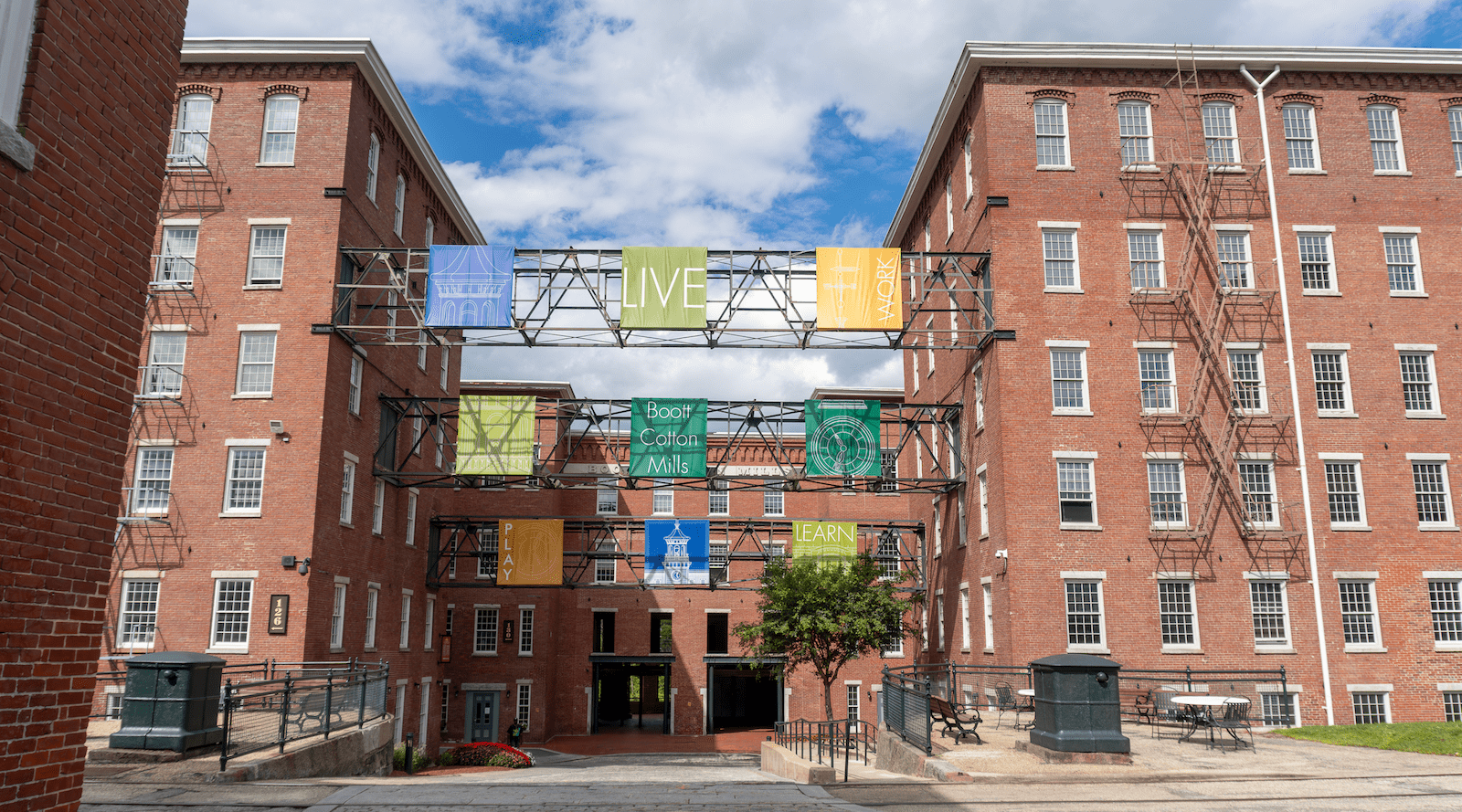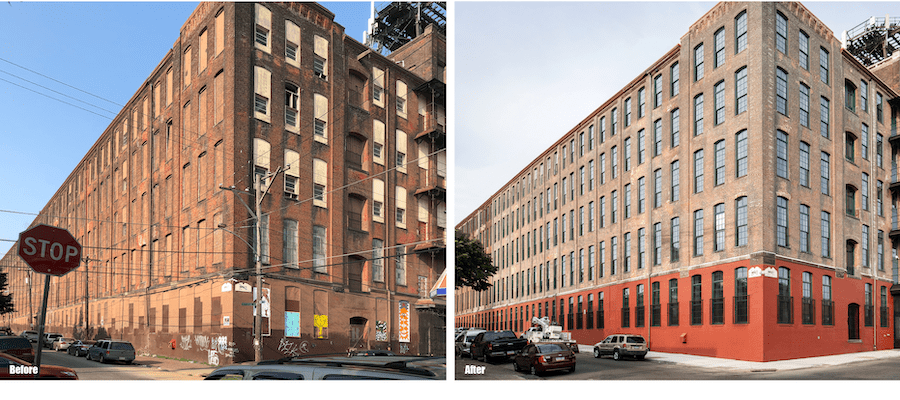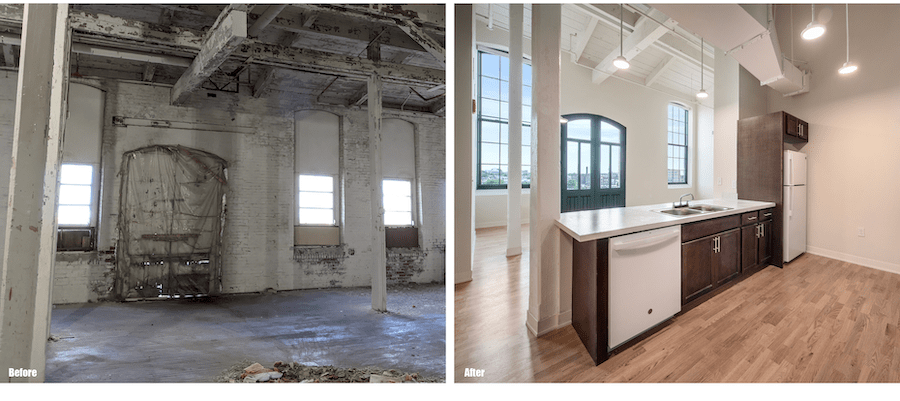The availability and affordability of housing affects every community, which has lead jurisdictions across the country to create local zoning regulations and funding mechanisms that encourage housing construction.
Adaptive reuse—the conversion of underused commercial properties to residential housing units—is an important path to revitalizing urban areas that are experiencing lower commercial occupancy in a post-COVID world where remote work is commonplace.
Building codes play an important role in the adaptive reuse of buildings by ensuring that existing structures remain safe as they serve their new purpose while also preserving the building’s original character and charm.
How Does Adaptive Reuse Support Housing Availability and Affordability?
Adaptive reuse not only breathes new life into previously underutilized commercial properties but also minimizes new-construction needs by leveraging existing infrastructure.
The integration of adaptive reuse projects within urban landscapes reduces the demand for new materials and helps curtail urban sprawl. This approach not only conserves energy and resources but also enhances the aesthetic and historical value of neighborhoods, fostering a deeper connection between residents and their built environment.
Moreover, adaptive reuse projects have a profound impact on community dynamics and economic development. By transforming structures that have outlived their original purposes into vibrant residential or mixed-use developments with a new purpose, cities can effectively address the critical need for housing while simultaneously stimulating local economies.
Adaptive reuse projects often lead to increases in property values and enhanced public safety. These projects can also help bolster local businesses as a result of creating higher residential density and can serve as a catalyst for further investment and development within the area, creating a ripple effect of improvement and revitalization.
The adaptive reuse trend is a popular topic for many local officials because the repurposing and reuse of existing buildings can allow communities to maintain and preserve architectural character and community history, as well as reimagining the urban core of a city. In addition, most existing buildings already have public infrastructure (roads and utilities) to support reuse.
In recognition of its potential, last fall the Biden administration announced a first-ever White House-led interagency effort geared toward supporting the conversion of high-vacancy commercial buildings to residential use. That effort includes new financing, technical assistance, and the sale of federal properties.
Existing retail facilities, affected by the rise of online shopping, or conventional office spaces facing reduced demand due to the prevalence of remote or hybrid workplaces, have surpassed their original functions. Now they present opportunities for revitalization, reconstruction, and transformation into multifamily residential units.
The Role of Codes and Standards in Adaptive Reuse Projects
Building codes and standards are fundamental to ensuring the safety and health of buildings and their occupants. The importance of adopting modern building codes can’t be overstated. They are crucial in maintaining structural integrity, ensuring occupant safety, and enhancing community resilience against natural disasters—mitigating damage, ensuring continuity of essential services, and facilitating a quicker recovery.
With that, communities that adopt and enforce the latest building codes are more likely to receive federal infrastructure funding and additional post-disaster recovery assistance.
But it also is critical for jurisdictions to support their building departments to maintain these standards through adequate staffing, training, and financing, thus ensuring that buildings can withstand the specific challenges posed by their regional environments.
The International Code Council's International Existing Building Code, among others, is crucial for adaptive reuse projects, just as building codes are for new construction and renovation work, to facilitate cost-effective construction that ensures occupant safety.
In adaptive reuse projects, the interior of the building must be altered to meet the needs of new occupants; workers in office or retail buildings have different needs and expectations when it comes to building features than homebuyers or renters do.
For example, residential units need provisions for cooking and sanitation, in addition to living and sleeping, while office buildings have large open spaces and shared, centralized restroom facilities, among other things.
The International Existing Building Code
The International Code Council's International Existing Building Code (IEBC), among others, is crucial for adaptive reuse projects, just as building codes are for new construction and renovation work, to facilitate cost-effective construction that ensures occupant safety.
The IEBC, which has been adopted and implemented in 45 U.S. states, helps guide how to cost-effectively repurpose an existing building while maintaining a safe environment for its new use. This code is not only recommended by the General Services Administration but is also mandated by both the Department of Defense and the Federal Emergency Management Agency (FEMA).
RELATED
- 4 Inspiring Adaptive Reuse Projects With Real Impact
- The Ins and Outs of Adaptive Reuse
- Motel Conversion: Buena Esperanza BALA Winner
The IEBC encourages the continued use and reuse of existing buildings, including historic buildings, by enabling changes in occupancy and use types, such as modifying an office building to be used as multifamily housing, through flexible options that aid design professionals.
There are three compliance methods in the International Existing Building Code:
1.) Prescriptive Method
2.) Work Area Method
3.) Performance Method
The Prescriptive Method provides a detailed, clear compliance pathway and risk mitigation.
The Work Area Method encourages the reuse and continued use of existing buildings, allowing different levels of compliance rigidity based on the level of work occurring, in a progressive manner. The more work proposed in an alteration, for instance, the more the work would need to comply with the current codes and standards for new construction.
A change of occupancy from commercial office space to residential multifamily would involve both an alteration and a change of occupancy. Changes of occupancies in the IEBC use a concept for relative hazards based on occupancy, or use, for specific code applications such as egress, allowable height, and area.
The Performance Method uses a scoring system with minimum safety and performance thresholds for both alteration and change of occupancy, helping ensure both safety in the built environment while allowing a significant level of flexibility.
The scoring system uses up to 21 building safety parameters over three categories of systems—fire safety, means of egress, and general safety—to determine the safety score for each category before considering the minimum score necessary for each category.
This pathway allows designers to evaluate different safety features best suited for the dynamics of the building and construction budgeting where only certain applications would need to be upgraded to the new construction codes.
Why Building Codes Are Essential in Adaptive Reuse Work
The reuse of underutilized and vacant buildings is an important consideration as policymakers seek to address the housing crisis. Building codes must continue to adapt to meet the evolving needs of cities.
The IEBC can and does play a crucial role in facilitating these transformations, ensuring safety and functionality standards as well as sustainable growth and the resilience of urban centers. This holistic approach to urban development underscores the importance of innovative building practices and regulations that accommodate and encourage the adaptive reuse of existing buildings.
The 2024 IEBC contains many important changes from previous editions; click here to learn more and to order
Kevin McOsker is VP of technical services at International Code Council (ICC) Government Relations, providing technical assistance with building codes and building department operations.
Michael F. Malinowski, FAIA, is president of Applied Architecture, in Sacramento, Calif. He has served as a code and regulatory consultant to the American Institute of Architects California since 2019, served as a member of the International Code Council’s Existing Building Code Committee, and currently serves on the National AIA Code Committee.









